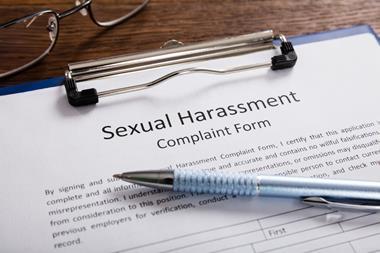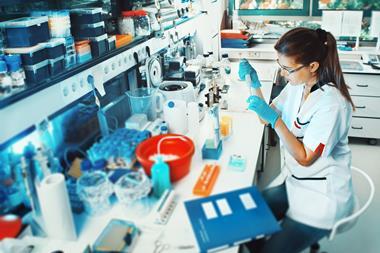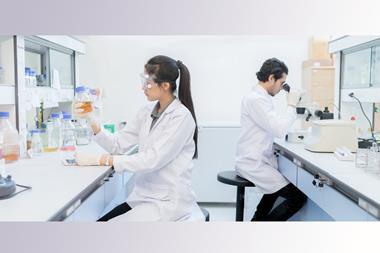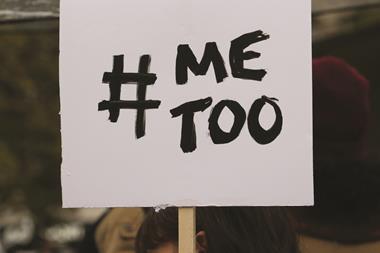Greater openness and a growing acceptance that sexual harassment is a problem at universities is helping more victims than ever before to come forward. But there are still obstacles to overcome when reporting harassment and not all institutes are facing up to the problem. At the American Chemical Society’s spring meeting in New Orleans two chemists shared their experiences that almost led them to abandon the field that they love.
Sanda Sun, a food chemist at Irvine Valley College in California, told the audience that her dream of becoming a chemistry professor almost ended while earning her PhD because of severe sexual harassment by her research adviser. ‘At the beginning of my PhD programme, I thought I was well on my way to achieving my goal of becoming a chemistry professor at a local college,’ Sun said. Her research adviser initially seemed to be caring and supportive, but over time Sun became uncomfortable.
‘As his teaching fellow, I led discussion sessions right before his lecture, and whenever I went to my desk to retrieve the books that I needed, he was always waiting for that good morning hug,’ she recalled. ‘It got to the point where I would rather carry all the textbooks, riding a bike home, than endure more of those awkward hugs.’
Taking advantage
The laboratory where they worked was in the basement of the school’s chemistry building and her desk was relatively isolated, so Sun felt unsafe. ‘I tried my best never to be alone in the lab, but one day the postdoc who was usually there did not come in and my adviser went out of his mind and started to kiss me – I rushed out, and determined not to go back.’
After days of ignoring his phone calls, the adviser showed up at Sun’s home and apologised for crossing a line. ‘I thought he was sorry for what he did, so I let him come inside the room because there were other students around in the house,’ Sun told the seminar attendees. ‘He knew exactly how to take advantage of my vulnerability, and started telling me how much he missed me and loved me, and he started exposing himself.’ She immediately opened the door and told him to leave.
When Sun tried to report the incident to the chemistry department chair he directed her to the school psychologist before she could finish the whole story. In the hopes of finishing the PhD programme, Sun said, she approached several faculty members to see if they could help her, but none did.
Overwhelmed by frustration and helplessness, Sun said she developed a bleeding ulcer and ended up in hospital for over a week. When she returned to school to figure out her next step, Sun said a large picture of her harasser greeted her in the lobby of the chemistry building because he was being honoured for excellence in teaching.
Sun decided to move away, and got a job as an associate chemist. She is proud of not being defeated and eventually achieving her goal of teaching chemistry at a university.
Nowhere to turn
Maria Dulay, a research scientist at Stanford University’s chemistry department also shared her story of sexual harassment. Dulay said her harasser was the administrator of the school’s chemistry department – the person any instance of sexual harassment should be reported to. She believes that her rejection of his advances led her harasser to retaliate in various ways, including not signing paperwork required for her to get paid.
Initially, Dulay chose to remain anonymous when she told her story to Chemical & Engineering News. Dulay has since gone public with her experiences and said that there have been some very positive developments at Stanford and in its chemistry department. ‘I am very proud of my chemistry department and Stanford, and the core group of individuals […] for their efforts in making a change,’ Dulay said.
‘From the moment I shared my story, I have been both a participant and witness to the incredible efforts by the constellation of individuals to make a change within the department and the university,’ Dulay recalled. Stanford’s chemistry department disseminated information on sexual harassment in multiple phases, including the publication of Dulay’s personal statement in January.
The person Dulay identified as her harasser reportedly resigned following an investigation prompted by more sexual harassment accusations. Dulay said the positive and very public progress made at Stanford has translated to other universities and even industry, and this gives her comfort as her daughter has recently finished school and decided to become a scientist. ‘I have tremendous responsibility to her to do what I can to create a safe place in which she will work and she will learn,’ Dulay said.
The speakers agreed that there is a high risk of sexual harassment in scientific fields. This is because they house people from different cultural backgrounds, ages and positions of power, and academic labs operate around the clock.
Enobong Branch, a sociologist at the University of Massachusetts Amherst, whose research focuses on race and inequality, agrees. ‘The normalisation of lab activities after hours, which is intended to promote cohesion, can also provide opportunities for unwanted attention,’ she said. In addition, she said sexual consent in an academic research setting can be very blurry. ‘When I am dependant on my adviser for funding, how much consent, how much freedom, do I actually have in that interaction?’ Branch asked.

















No comments yet